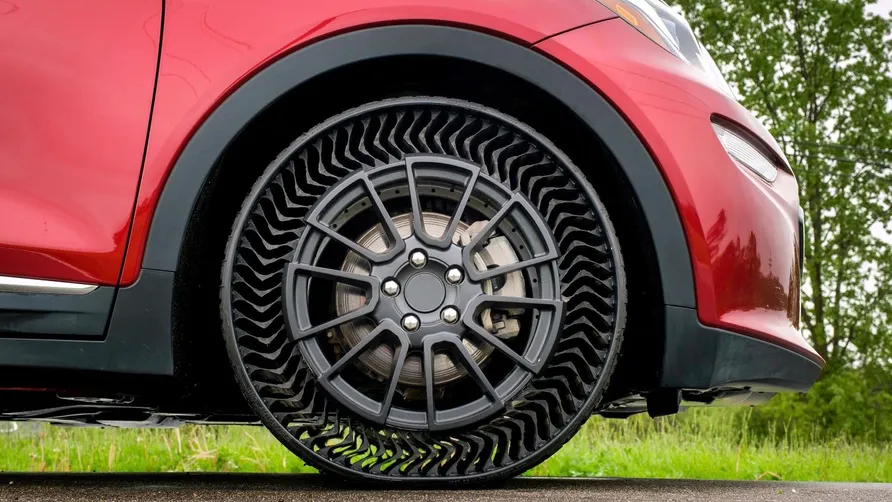Repair instructions
How Long Should Tires Last on a Brand-New Car?
If you’ve recently bought a brand-new car, you may be surprised to learn that the tires it comes with may not last as long as you expect. While some stock tires can perform well in terms of handling and ride quality, they’re often not built for longevity. OEM (Original Equipment Manufacturer) tires tend to wear out more quickly compared to tires from specialized brands.

On average, tires on new cars last about 50,000 miles, but signs of wear can appear after as few as 20,000 miles. You can typically expect 3 to 5 years of use before needing to replace your OEM tires. Tire lifespan varies based on several factors, including tire type, treadwear rating, drivetrain, and driving habits. With proper care, though, you can extend the life of your tires.
Do Tires on New Cars Wear Out Faster?
Yes, tires on new cars generally wear out faster than those from dedicated tire manufacturers. OEM tires are designed with ride comfort in mind, not necessarily durability. They tend to use softer rubber compounds, which can provide a smoother ride but wear out more quickly. Additionally, OEM tires are often inflated to lower-than-optimal pressure, which can further accelerate wear.
How Many Miles Do Tires Last on a New Car?
On average, you can expect the tires on a new car to last around 50,000 miles. However, noticeable wear may begin after just 20,000 miles, meaning you should be prepared to replace your OEM tires in about 3 to 5 years.
How Long Do Tires Last on Average?
For aftermarket, branded tires, the average lifespan is similar—around 50,000 miles. However, these tires typically last longer, around 6 years, due to higher quality materials and construction.
What Causes Tires To Wear Out Too Quickly?
Several factors contribute to rapid tire wear, regardless of whether your tires are OEM or branded:
Tire Type
Certain tire types, such as high-performance tires, use softer rubber compounds that offer better traction but wear out faster. In contrast, all-season tires generally have a longer lifespan.
Treadwear Rating
Tires with a higher treadwear rating tend to last longer. The treadwear rating is an indicator of how durable a tire’s tread is. Tires with lower ratings will wear down more quickly, reducing traction. Be sure to replace your tires when the tread depth reaches 2/32 inches.
Drivetrain
The drivetrain determines which tires receive power from the engine. Vehicles with front-wheel drive (FWD), rear-wheel drive (RWD), or all-wheel drive (AWD) distribute power differently, which can cause uneven tire wear if not managed. Tire rotation is key here—if you don’t rotate your tires regularly, certain tires will wear out faster than others.
Terrain and Road Conditions
Tires take a beating when driving on rough, unpaved roads, steep inclines, or rocky terrain. Off-roading can significantly shorten the lifespan of your tires. Even on paved roads, frequent exposure to potholes and poor road conditions can accelerate tire wear.
Bad Driving Habits
Aggressive driving habits like hard braking, rapid acceleration, and sharp turns can cause tires to wear out prematurely. Smooth driving not only enhances safety but also extends tire life.
How To Extend Your Tire’s Lifespan
If you want to get the most out of your tires, here are some pro tips for maximizing their lifespan:
Regular Maintenance and Inspection
Inspect your tires regularly for signs of wear, including uneven tread, cuts, or bulges. Adhering to your vehicle manufacturer’s recommended maintenance schedule will help catch potential issues early.
Rotate Tires Regularly
Tire rotation helps ensure that all four tires wear evenly. For most vehicles, rotating your tires every 5,000 to 8,000 miles is recommended. Failing to rotate your tires regularly can lead to uneven wear and a shorter lifespan.
Keep Tires Balanced
Unbalanced tires can cause vibrations, uneven wear, and poor handling. If you notice any unusual vibrations, it might be time to have your tires balanced. Additionally, getting a wheel alignment ensures that your car drives straight and doesn’t put unnecessary strain on any one tire.
Build Good Driving Habits
Avoid aggressive driving behaviors like quick starts and stops. Smooth driving helps reduce friction and heat buildup, which can otherwise contribute to faster tire wear.
Maintain Proper Tire Pressure
Proper tire pressure is crucial for tire longevity and vehicle safety. Under-inflated tires wear out more quickly and are prone to overheating, while over-inflated tires can cause reduced traction and uneven wear. Always check your tire pressure regularly and keep it at the recommended level.
How Do You Know How Old Your Tires Are?
You can find the age of your tires by checking the DOT number on the sidewall. The last four digits of the number indicate the week and year the tire was manufactured. For example, a DOT number ending in “1923” means the tire was made in the 19th week of 2023.
How Often Should You Change Your Tires?
On average, tires should be replaced every 36,000 to 75,000 miles, depending on tire type and usage. However, tire age is just as important. It’s generally recommended to replace your tires before they reach 10 years old, regardless of mileage.

Be sure to replace your tires sooner if you notice:
- Low tire tread
- Visible cracks or bulges
- Uneven wear
- Vibrations while driving
- Tire warning lights
Ignoring these signs could lead to more serious issues, like blowouts or reduced performance.
By following these guidelines and maintaining good driving habits, you can get the most out of your car’s tires and ensure a safer, more efficient driving experience. Regular tire care is key to extending tire life and keeping your vehicle running smoothly.
